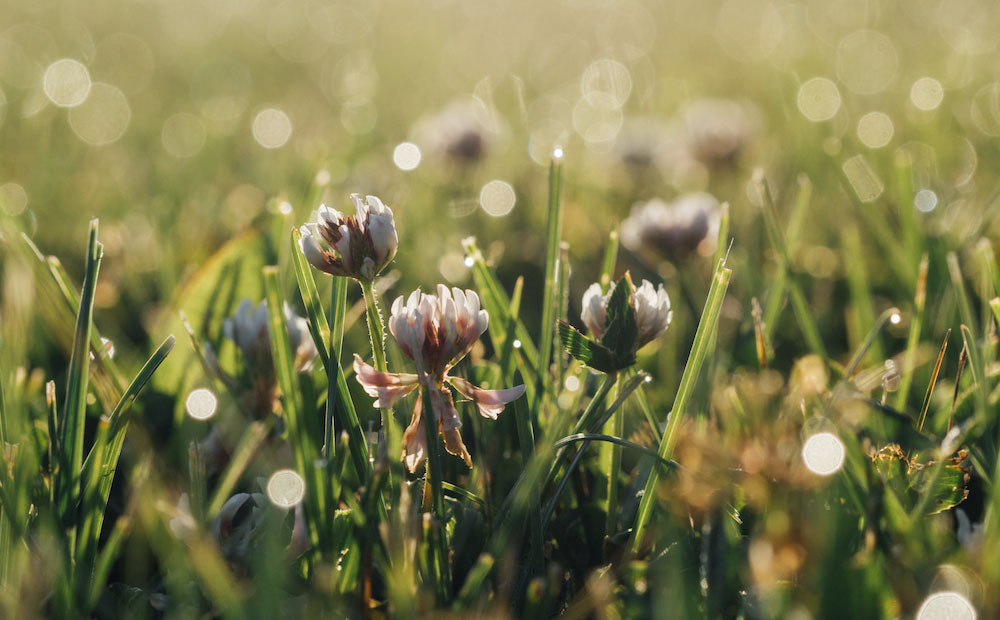WHAT TO EXPECT IN SPRING
When the temperatures plummet, and we take shelter in the warm atmospheres of our homes, our garden beds aren’t quite as lucky. Our plants are left to face the most frigid temperatures our Indiana winters can throw at them, and we often worry about what we’ll be left with when spring returns. With what they face - from snow to ice and more - will there even be a garden to return to in spring?
WHAT HAPPENS TO GARDENS IN WINTER
As winter approaches, we know better than to cling to our annual plants. They may blossom and bloom with vigor throughout the growing season, but having given it their all in their short lifetime, they aren’t prepared to take on the winter weather to come. When spring arrives, these plants will be long gone and spent.
On the other hand, much in the same way that we have developed methods of surviving the winter temperatures with warm layers and central heating, perennial plants have also developed similar strategies to give them a fighting chance in the freezing weather. Perennials dig their roots down much further to access the unfrozen ground below the frost layer where they can still pull in the moisture they need to survive.
However, this is only possible given enough insulation from mulch or snow, which prevents the frost layer from deepening more than it should. If there isn’t enough snow coverage, or the garden wasn’t insulated with mulch, perennials have a much harder time accessing moisture and preventing ice from forming in their cellular systems, which can be detrimental.
This same insulation-by-show phenomenon can also be seen above ground with evergreen trees. Evergreens fill their needles with the sugary sap that is produced by photosynthesis, which lowers the freezing point so they will not freeze and die out. If they aren’t sheltered from the wind with a layer of snow or winter protection, though, they may still reach the freezing point needed - resulting in brown, dried needles.
THE SPRING GARDEN
Given that many of our plants rely on the help of snow for protection, what you come to face in spring will heavily depend on the amount of snowfall you may have had in your backyard.
If the show wasn’t generous in your yard, you might have some trimming and planting in your future. Some perennials may not return as the weather warms, despite all removal of dead growths and coaxing with fertilizers, and evergreens may have dried and browned in the wind and will need dead growths to be trimmed back to grow
If you’ve had plenty of snowfall, you may only need a little routine cleaning to get back into your garden when the ground thaws. You can expect to see typical “winter mulch” - the dead foliage and growths from last year’s plants, as well as any leaves that may have fallen. You may also notice some growth in your evergreens that may need to be trimmed to keep them looking in tip-top shape and your perennials may grow back bigger than expected - in need of a little division.
No matter which garden you may be facing, though, both can be boosted with a bit of spring cleaning to get them back into shape in no time!
HOW TO CLEAN UP YOUR SPRING GARDEN
Remove winter mulch. To survive the cold, perennials stop investing energy into their above-ground growths and pull their focus underground to the insulated plant and roots. This leaves us with some unsightly dead leaves and stems to face when the snow melts. However ugly it is, though, it’s beautiful for adding into the compost pile along with the fallen leaves where you can mix up some nutrition for your growing season. Simply trim down to the ground or the nearest sign of fresh growth.
Prune shrubs and trees. Trees and shrubs, including evergreens, may also be facing some dead growths and could benefit from a little trimming to continue growing their best. Prune away any growths that are dried, dead, or browning to the first healthy bud.
Loosen and feed the soil. While snow is a fantastic insulator, it can also be quite heavy and can pack down soil, preventing oxygen from getting at our plants’ roots. Loosen the top layer by lightly running it over with a rake to remove any compression and add a touch of all-purpose fertilizer to wake up the resting roots.
Fill in with starters and annuals. The greatest virtue of spring is undoubtedly patience as we anxiously wait to see growth return. While we’re waiting, though, our gardens don’t need to remain empty and bare. Seeds that have been started inside and starter plants that are meant for cool weather are great for adding into the garden after the last frost (here in Indianapolis, that’s typically the last week of April). Cool weather annuals can also be brought out to bring color and life back to the soil.
Keep a watchful eye. Some plants will return, while others will not. Keep an eye on your garden as the weather warms and watch for any signs of regrowth. If bare spots remain later in the season, it may be time to seek out new perennials to take a more permanent place in the bed.
Winter can be an uncertain time in the garden, as we watch our plants disappear from sight and hope they return in spring. But regardless of what happens in the winter, the spring will return and so will our gardens, and all they need to get growing is a little love from us to set them up for success once again





